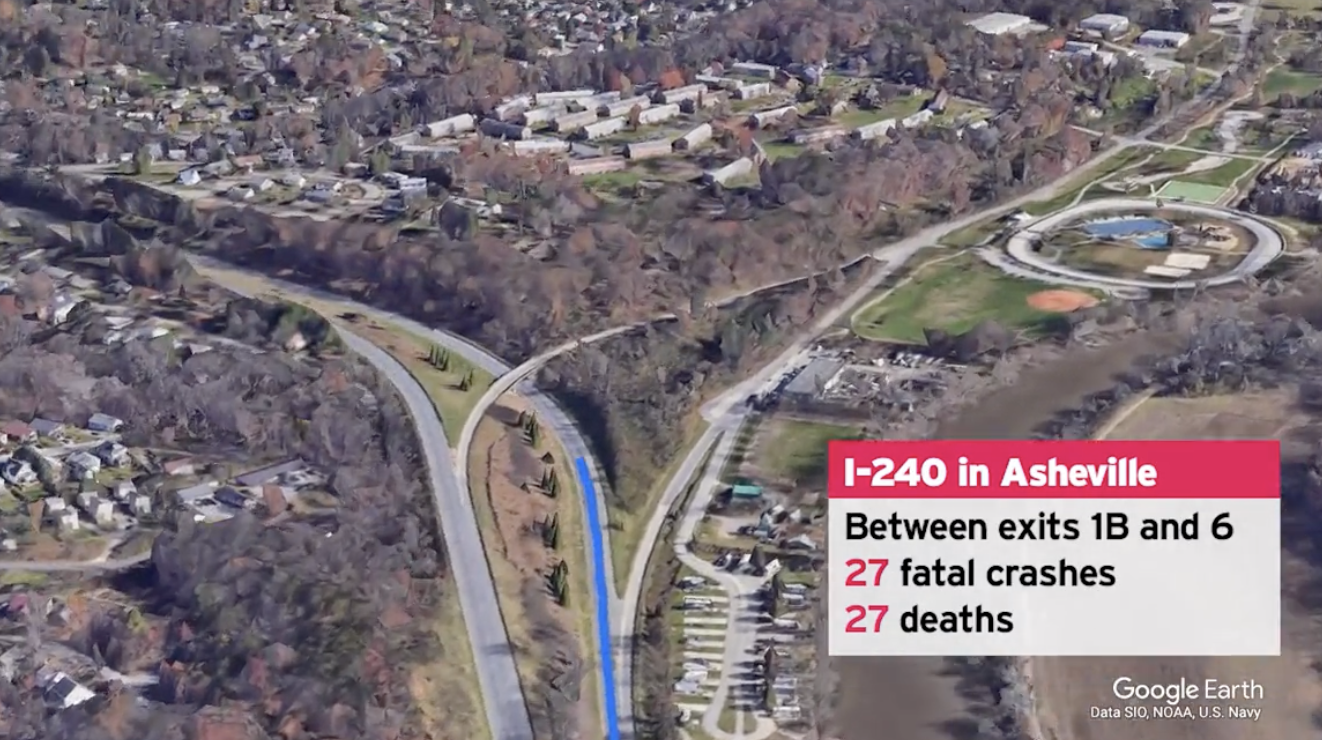[Study] The Deadliest Roads in North Carolina
https://www.naglefirm.com/deadliest-roads-in-north-carolina/.
Motor vehicle collisions are consistently among the leading causes of death and injury in North Carolina. While a fatal collision can occur at any point on the state’s road network, are there areas where motorists are at higher risk? If so, where are the deadliest places on North Carolina roads? Working with the data visualization agency 1Point21 Interactive, we examined all fatal crashes that occurred in North Carolina from 2000 – 2019 and isolated those that occurred on a primary or secondary road. During this 20-year period, 13,282 people were killed in 12,030 fatal crashes on these roadways. In this analysis, we highlighted the seven deadliest 5-mile stretches in the state of North Carolina. At Nagle & Associates, P.A., our attorneys work exclusively with clients who have been injured in serious motor vehicle collisions and strongly advocate for the safety of all drivers on the road. We believe that by identifying the areas in North Carolina that are most dangerous to drivers, we can help them be safer.Interactive Map – Fatal Crashes in North Carolina
*The map above is interactive. Each red line represents a deadly road segment, while each red dot represents a fatal collision that occurred during our observation period. Use the mouse wheel or touch gestures to zoom and move around the map. Hover over map items to view more information. If viewing on a mobile device, rotate to landscape mode for the best experience.
Our Findings: The Deadliest Places on North Carolina Roads
During our study period, we identified seven five-mile stretches where more than 21 fatal crashes occurred. The deadliest stretch in North Carolina can be found in Charlotte, Asheville, Greensboro, Gastonia, and Rocky Mount. Only two cities had more than one deadly stretch: Charlotte and Greensboro.
Table: The 7 Deadliest Road Segments in North Carolina
| Rank | Crashes | Deaths | City | Road | Exits |
|---|---|---|---|---|---|
| 1 | 39 | 42 | Charlotte | I-85 | exits 36-41 |
| 2 | 34 | 38 | Charlotte | I-77 | Remount Rd-exit 13A |
| 3 | 27 | 27 | Asheville | I-240 | exits 1B-6 |
| 4 | 26 | 26 | Greensboro | US-29 | Joe Brown Dr-East Florida St |
| 5 | 24 | 31 | Rocky Mount | I-95 | SR-1603 – exit 138 |
| 6 | 21 | 23 | Greensboro | I-40 | exits 216-221 |
| 7 | 21 | 21 | Gastonia | I-85 | exits 14-19 |
How You Can Use This Data and Safety Tips
Unpredictable road conditions in North Carolina can limit the visibility of drivers and increase their risk of getting into a collision. Traffic congestion and tractor-trailer traffic also add an additional risk to these roads. However, negligent, inattentive, and unsafe driving behaviors are the biggest risks on our roadways. While not every crash can be prevented, understanding where danger or risk may be elevated can help drivers take steps to increase safety and lower the likelihood of being involved in a collision. Anytime you are behind the wheel, whether on one of the deadly stretches we identified or not, be sure to:- Obey all posted traffic signs and signals
- Avoid distraction, especially the use of a cell phone or texting.
- Do not drive under the influence of drugs or alcohol
- Be aware of your surroundings and potential hazards or unsafe drivers
- Avoid driving late at night if possible. If unavoidable, be sure to be well-rested and extra aware.
- Ensure that your vehicle’s tires and breaks are in good, safe condition.
Methodology and Fair Use
This study is based on 2000-2019 fatal crash data from the National Highway Traffic Safety Administration (NHTSA). We looked at all fatal crashes that occurred on either a primary road or a secondary road in North Carolina. According to the US Census Bureau, Department of Commerce: Primary roads are generally divided, limited-access highways within the interstate highway system or under state management, and are distinguished by the presence of interchanges. These highways are accessible by ramps and may include some toll highways. Secondary roads are main arteries, usually in the U.S. Highway, State Highway, or County Highway system. These roads have one or more lanes of traffic in each direction, may or may not be divided, and usually have at-grade intersections with many other roads and driveways. They often have both a local name and a route number. If you would like to report or republish our findings, please provide credit by linking to this page.- Categories:
- North America
- Studies

